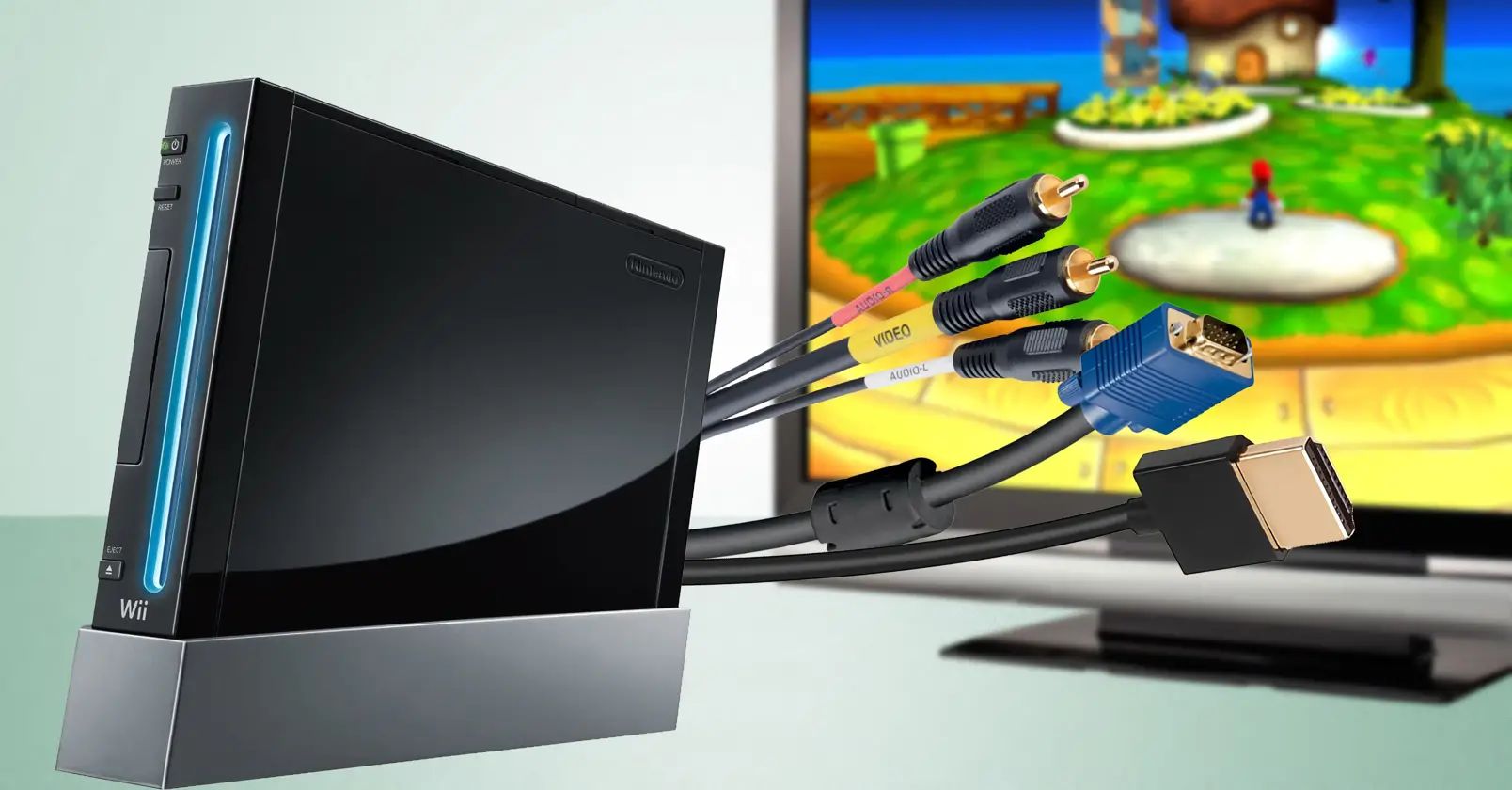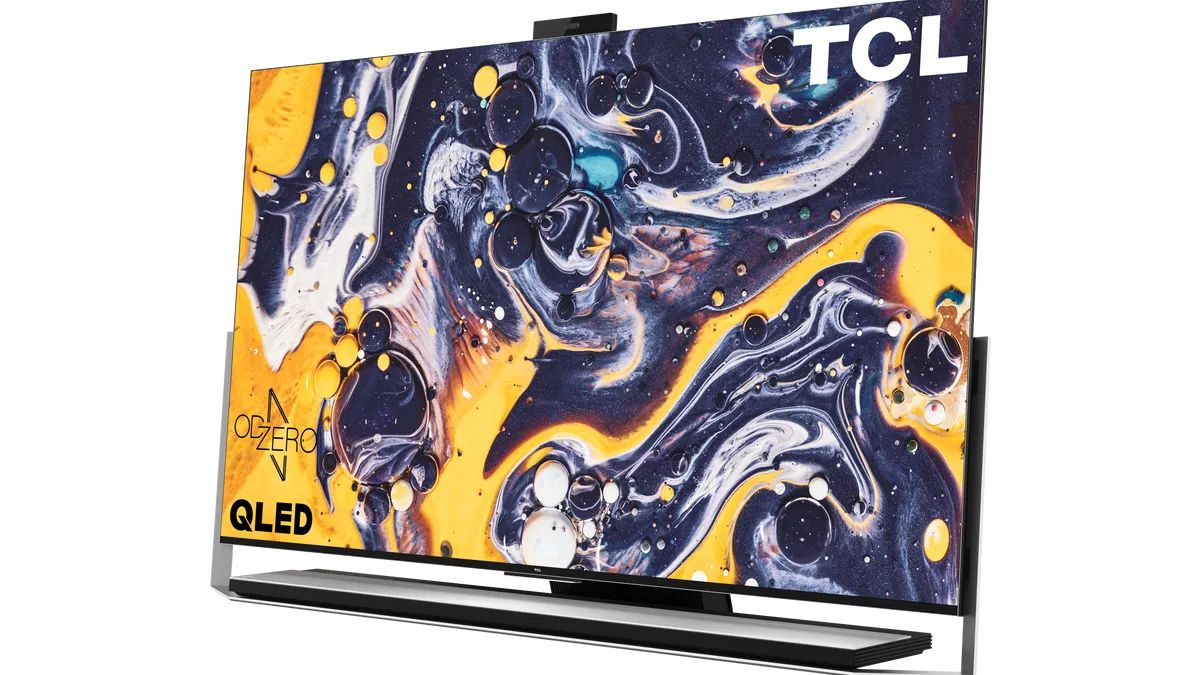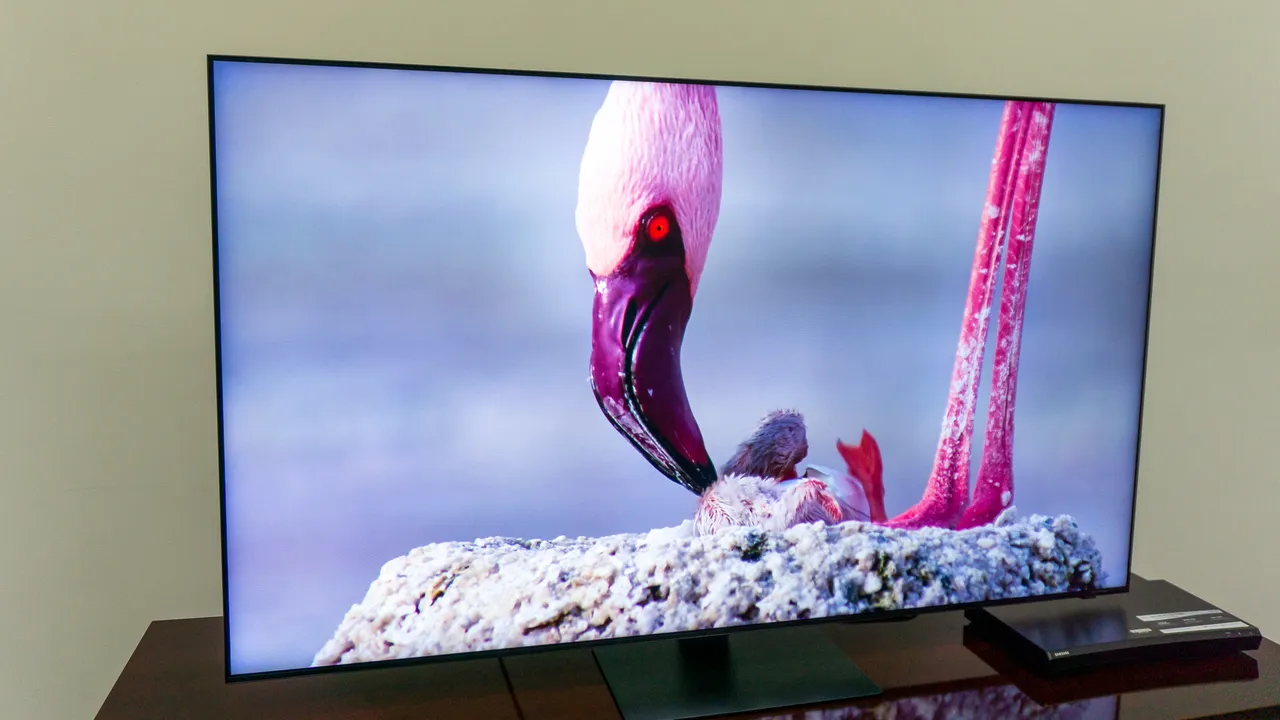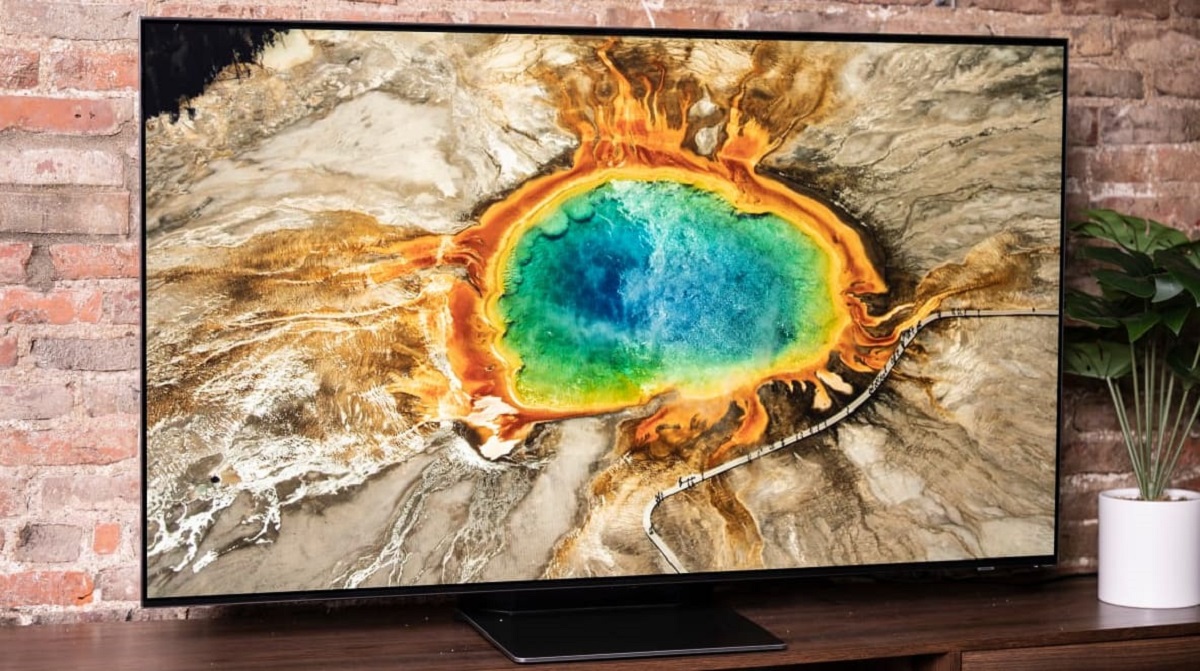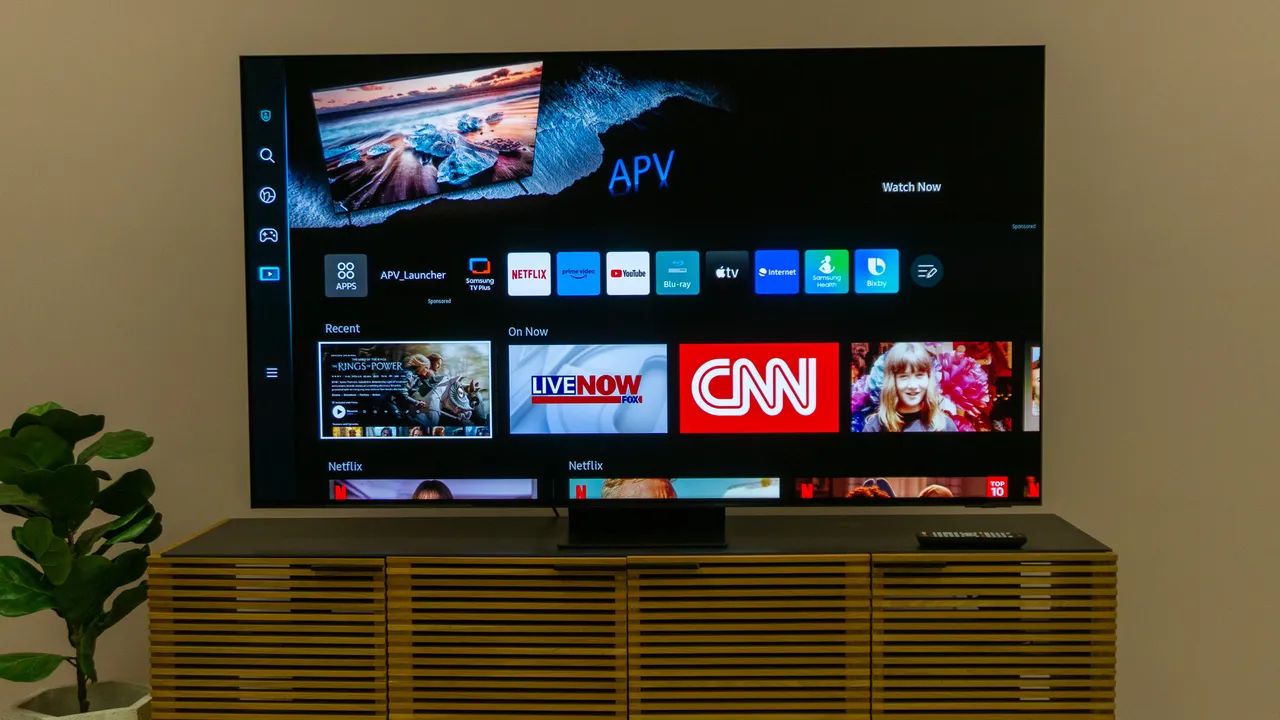Introduction
Welcome to our guide on how to get whiter whites on Samsung LED TVs. If you’ve ever noticed that the whites on your Samsung LED TV appear more yellow than they should, you’re not alone. This can be a common issue with LED TVs and can be quite frustrating, especially when trying to enjoy your favorite movies and TV shows in vibrant colors.
The yellowing of whites on Samsung LED TVs is typically caused by incorrect picture settings or a simple misalignment of display settings. Thankfully, there are several adjustments and steps you can take to improve the color accuracy and achieve whiter whites on your television.
In this guide, we will walk you through the different methods to address this issue. We will explain how to adjust the backlight settings, explore the various picture mode options, calibrate the white balance settings, and use the color temperature settings effectively. Additionally, we will discuss the importance of adjusting contrast and brightness levels to enhance overall picture quality.
Another factor that can affect the appearance of whites on your Samsung LED TV is a dirty screen. We will share tips on proper cleaning techniques to remove fingerprints, smudges, and dust particles that can compromise the image quality. Additionally, we will touch on the importance of keeping your TV’s firmware up to date to ensure optimal performance.
By following the steps outlined in this guide, you’ll be able to improve the whites on your Samsung LED TV and enjoy a clearer, more vibrant viewing experience. Let’s dive into the details and get started on achieving whiter, crisper whites on your Samsung LED TV.
What Causes Yellowing of Whites on Samsung LED TVs?
Before we delve into the solutions, let’s first understand the causes behind the yellowing of whites on Samsung LED TVs. This issue, known as color temperature drift, can occur due to a variety of factors.
One of the main contributing factors is the default picture settings of the TV. Manufacturers often set the color temperature to a warmer setting to make the picture appear more pleasing to the eye in stores. However, this warmer setting can result in whites having a yellowish tint when viewed at home.
Another factor could be improper backlight settings. LED TVs rely on backlighting to illuminate the screen, and if the backlight is too high or too low, it can affect the color accuracy, making the whites appear yellowish or dull.
Additionally, environmental factors such as ambient lighting can influence the perception of colors on the TV screen. If the room has warm lighting or direct sunlight, it can impact the appearance of whites on the TV.
Lastly, over time, the display settings on the TV may become misaligned or require recalibration. This can happen due to various reasons, including software updates or accidental changes in the settings.
Understanding these causes is essential because it allows us to target the specific issues and adjust the TV settings accordingly. In the next sections, we will explore the different methods to improve the white balance and achieve whiter whites on your Samsung LED TV.
How to Adjust the Backlight Settings
One of the first steps in getting whiter whites on your Samsung LED TV is to properly adjust the backlight settings. The backlight is responsible for illuminating the screen, and incorrect settings can impact the overall picture quality, including the appearance of whites.
To adjust the backlight settings, follow these steps:
- Press the Menu button on your Samsung TV remote to access the settings menu.
- Navigate to the Picture Settings or Display Settings menu.
- Look for the Backlight or Brightness option.
- Adjust the backlight level by increasing or decreasing the value. Higher values increase the brightness while lower values decrease it.
- Make small incremental adjustments and observe the changes in picture quality.
- Continue fine-tuning the backlight settings until you achieve a balance between brightness and clarity.
It’s important to note that the optimum backlight level may vary depending on the ambient lighting conditions in your room. If the room is brightly lit, you may need to increase the backlight level to counteract the external light. Conversely, in a darker room, a lower backlight level may be more suitable.
Remember to take breaks between adjustments and step back to view the screen from a typical viewing distance. This will give you a better perspective on how the changes in backlight settings affect the overall picture quality.
By properly adjusting the backlight settings, you can enhance the brightness and whiteness on your Samsung LED TV, ensuring that the whites appear crisp and vibrant without any yellow tint.
Understanding the Picture Mode Options
When it comes to improving the color accuracy and achieving whiter whites on your Samsung LED TV, understanding the available picture mode options is crucial. Picture modes are pre-set configurations that adjust various picture settings to optimize the display for different viewing scenarios.
Here are some common picture mode options you may find on your Samsung LED TV:
- Standard Mode: This is the default picture mode that aims to provide a balanced and natural-looking image. While it may be suitable for general viewing, it may not always produce the best white balance.
- Movie or Cinema Mode: Designed to replicate the picture quality of a theater, this mode generally offers more accurate colors and a warmer, cinematic look. It can be a good option if you prefer a warmer white balance.
- Vivid Mode: As the name suggests, this mode enhances colors and brightness settings to create a more vibrant and eye-catching image. However, it may result in whites that appear overly bright or bluish.
- Game Mode: Specifically tailored for gaming, this mode optimizes the display for fast-paced action, minimizing input lag. While it may not have a significant impact on white balance, it’s worth switching to this mode for gaming purposes.
- Calibrated or Expert Mode: Some Samsung TVs offer advanced picture modes that allow manual adjustments to various settings like white balance, color temperature, and more. These modes provide greater control over the display and can help achieve accurate white balance.
Experiment with different picture modes to find the one that suits your preferences and improves the white balance on your TV. Keep in mind that each mode may have its own default settings, including backlight, contrast, and color temperature, so you may still need to make additional adjustments to fine-tune the white balance.
Next, we’ll delve into the process of calibrating the white balance settings to achieve optimal color accuracy and whiter whites on your Samsung LED TV.
Calibrating the White Balance Settings
Calibrating the white balance settings on your Samsung LED TV is a crucial step in achieving accurate colors and whiter whites. The white balance refers to the balance of colors in the image, particularly the balance between red, green, and blue (RGB) channels.
To calibrate the white balance settings, you can follow these steps:
- Access the Picture Settings or Display Settings menu on your Samsung TV by pressing the Menu button on the remote.
- Look for the White Balance or Color Temperature option.
- There may be pre-set options such as Cool, Normal, Warm, or a slider to manually adjust the color temperature. Select the desired option or adjust the slider.
- Alternatively, for more precise calibration, you can access the Expert or Calibrated picture mode settings if available. Here, you can adjust the RGB color channels individually.
- Use a calibration test pattern or reference image, either on a DVD or available online, to aid in making adjustments. These patterns typically consist of different shades of gray, allowing you to identify any color imbalances.
- Make incremental adjustments to the color temperature or RGB channels, aiming for a neutral gray color without any visible color cast. The goal is to achieve a white that looks natural and neutral, without appearing too warm (yellow) or cool (blue).
- Take breaks between adjustments to prevent eye fatigue and reassess the white balance from a typical viewing distance after each adjustment.
- Continue fine-tuning the white balance settings until you achieve a visually pleasing and accurate representation of colors, including whiter whites.
It’s important to note that calibrating the white balance settings can be a subjective process, as individual preferences and ambient lighting conditions may vary. However, by following these steps and trusting your eye, you can significantly improve the color accuracy and ensure that the whites on your Samsung LED TV appear clean and vibrant.
Using the Color Temperature Settings
The color temperature settings on your Samsung LED TV play a significant role in achieving whiter whites and accurate color reproduction. Color temperature refers to the perceived warmth or coolness of the image and is measured in Kelvin (K). Adjusting the color temperature allows you to fine-tune the balance of red, green, and blue colors in the picture.
To utilize the color temperature settings effectively, follow these steps:
- Access the Picture Settings or Display Settings menu on your Samsung TV by pressing the Menu button on the remote.
- Look for the Color Temperature or Color Tone option.
- There are typically pre-set options such as Cool, Normal, and Warm. These options adjust the color temperature to create different looks. Select the option that best suits your preferences.
- If you prefer more precise control over the color temperature, some Samsung TVs offer a Custom or Manual option. In this mode, you can manually adjust the red, green, and blue color levels.
- When adjusting the color temperature manually, keep in mind that lower values (e.g., 6000K) tend to produce a warmer, yellowish image, while higher values (e.g., 10000K) create a cooler, bluish image. Aim for a value that appears natural and pleasing to your eye.
- Make small incremental adjustments to the color temperature and observe the changes in the whites and overall color balance on your TV screen.
- Remember to take breaks and step back to view the screen from a normal viewing distance to assess the impact of your adjustments.
- Continue fine-tuning the color temperature settings until you achieve a balance that produces whiter whites without any color distortion.
Keep in mind that the optimal color temperature may vary depending on personal preference and the ambient lighting conditions in your room. Experiment with different settings and trust your eye to find the color temperature that creates the most accurate and pleasing visuals.
By properly adjusting the color temperature settings, you can enhance the white balance on your Samsung LED TV, resulting in a more vibrant and lifelike viewing experience.
Adjusting the Contrast and Brightness
Properly adjusting the contrast and brightness settings is crucial in achieving optimal picture quality and whiter whites on your Samsung LED TV. These settings determine the balance between light and dark areas in the image, affecting the overall clarity and detail.
To adjust the contrast and brightness settings, follow these steps:
- Access the Picture Settings or Display Settings menu on your Samsung TV by pressing the Menu button on the remote.
- Look for the Contrast and Brightness options.
- Contrast refers to the difference between the brightest and darkest elements in the image. Adjust the contrast level to your preference, ensuring that the whites appear bright without losing detail in the brighter areas.
- Brightness, on the other hand, controls the overall brightness of the image. Increase the brightness if the image appears too dark or decrease it if it appears too bright.
- Make small adjustments to both the contrast and brightness settings, keeping in mind the desired balance between bright whites and dark areas.
- Take breaks and step back to view the screen from a normal viewing distance to assess the impact of your adjustments.
- Continue fine-tuning the contrast and brightness settings until you achieve an optimal balance that showcases whiter whites and enhances the overall picture quality.
It’s important to note that the recommended contrast and brightness levels may vary depending on the ambient lighting conditions in your room. In a well-lit room, you may need to increase the brightness to compensate for the external light. Conversely, in a dark room, a lower brightness level may be more suitable.
Keep in mind that the contrast and brightness settings are interconnected, and adjusting one may affect the appearance of the other. Therefore, it’s crucial to find the right balance between the two to ensure accurate and vibrant whites on your Samsung LED TV.
By properly adjusting the contrast and brightness settings, you can enhance the overall picture quality, unveil whiter whites, and enjoy a more immersive viewing experience.
Cleaning the TV Screen
Regularly cleaning your TV screen is essential for maintaining optimal picture quality and ensuring that the whites on your Samsung LED TV appear as crisp and vibrant as possible. Dust, fingerprints, and smudges can accumulate on the screen, compromising the clarity and color accuracy. By following some simple cleaning tips, you can keep your TV screen in pristine condition.
Here are some guidelines to clean your TV screen properly:
- Turn off your television and allow it to cool down before cleaning.
- Gently wipe the screen with a microfiber cloth or a soft, lint-free cloth. Avoid using paper towels or abrasive materials, as they can scratch the screen.
- Dampen the cloth slightly with distilled water or a screen-cleaning solution specifically designed for LCD/LED screens. Avoid using regular household cleaners, alcohol, or ammonia-based solutions, as they can damage the screen.
- Gently wipe the screen in a circular motion, applying light pressure. Be careful not to press too hard or use excessive moisture, as it can enter the screen or seep into the TV’s internals.
- For stubborn smudges or fingerprints, you can moisten the cloth slightly with the cleaning solution and gently rub the affected area. Again, avoid applying too much pressure.
- Once you have cleaned the screen, use a dry microfiber cloth to gently wipe away any remaining moisture or streaks.
- Avoid spraying the cleaning solution directly onto the screen. Instead, spray it onto the cloth to control the amount of moisture.
- In addition to cleaning the screen, consider dusting the surrounding areas, such as the bezel, with a soft, dry cloth to remove any accumulated debris.
Remember to always follow the manufacturer’s guidelines when cleaning your Samsung LED TV, as specific instructions may vary. It’s also recommended to perform the cleaning process regularly to prevent the buildup of dirt and keep your screen looking its best.
By maintaining a clean TV screen, you can ensure that the whites on your Samsung LED TV appear brighter, allowing you to enjoy a more immersive and visually pleasing viewing experience.
Updating the Firmware
Keeping the firmware of your Samsung LED TV up to date is an important step in ensuring optimal performance and addressing any potential issues, including color accuracy and whiter whites. Firmware updates can introduce bug fixes, performance improvements, and even new picture calibration options.
To update the firmware of your Samsung LED TV, follow these steps:
- Check for the model number of your TV. You can find this information on the back of the TV or in the TV’s settings menu.
- Connect your TV to the internet. You can either use a wired Ethernet connection or connect it to your home Wi-Fi network.
- Access the TV’s settings menu by pressing the Menu button on the remote.
- Navigate to the Support or System section in the settings menu.
- Look for the Software Update or Firmware Update option. The location of this option may vary depending on your TV model.
- Select the Software Update or Firmware Update option and follow the on-screen instructions to check for updates.
- If an update is available, choose the option to download and install the update. Do not interrupt the update process; let it complete.
- Once the update is installed, the TV may restart automatically. After the restart, the firmware will be up to date.
It’s important to note that the update process may take some time, depending on the size of the update and the speed of your internet connection. Therefore, ensure that your TV is connected to a stable power source and refrain from turning it off during the update process.
By regularly updating the firmware of your Samsung LED TV, you can ensure that you have the latest improvements and enhancements that can address any issues related to color accuracy, including yellowing of whites. Keeping the firmware up to date will help you achieve whiter whites and an overall better viewing experience.
Conclusion
Achieving whiter whites on your Samsung LED TV is not only essential for optimal picture quality but also enhances your overall viewing experience. By following the steps and tips outlined in this guide, you can address common issues such as yellowing of whites and improve the color accuracy of your television.
Start by adjusting the backlight settings to ensure proper illumination and brightness on the screen. Explore the various picture mode options to find the one that aligns with your preferences and enhances the white balance. Additionally, calibrate the white balance settings to achieve accurate colors and remove any color temperature drift.
Furthermore, pay attention to the contrast and brightness settings to strike the right balance between light and dark elements in the image. Regularly clean the TV screen to remove dust, fingerprints, and smudges that can impact the clarity and color accuracy. Lastly, keep the firmware of your Samsung LED TV up to date to benefit from bug fixes, performance improvements, and potential new picture calibration options.
Remember, achieving whiter whites on your Samsung LED TV is a subjective process, as personal preferences and ambient lighting conditions may vary. Trust your eyes and make adjustments that appeal to your visual preference while ensuring accurate and vibrant colors.
By following these guidelines and keeping your Samsung LED TV in optimal condition, you can enjoy a more immersive, visually stunning viewing experience with whiter whites and enhanced picture quality.












